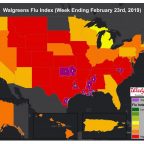United Spinal Association Publishes Free Accessible Air Travel Guide for People with Disabilities
United Spinal Association today announced the publication of an Accessible Air Travel Guide for wheelchair users and other people with disabilities, designed to provide a hassle-free experience at the airport.
Wheelchair users and other people with disabilities using assistive equipment, have a little more travel preparation to consider than the average jet setter.
The booklet provides people who use wheelchairs and other mobility aids with all the information they need to have a safe and enjoyable flight.
“Air travel can be frustrating, especially if you have mobility equipment and require special accommodations,” said James Weisman, United Spinal’s president and CEO.
“We’re proud to offer this free booklet so that wheelchair users can avoid the accessible air travel blues,” he added.
Here are just a few things to know from the Accessible Air Travel Guide:
•Travelers requiring special accommodations or concerned about the security screening process may ask a TSA officer or supervisor for a passenger support specialist who can provide on-the-spot assistance.
•Passengers may bring manual wheelchairs, canes, crutches, walkers, prescription medications, and any medical device needed to administer them such as syringes, vision enhancers, portable oxygen concentrators (POCs), and respirators and ventilators that use non-spillable batteries as long as they comply with applicable safety, security, and hazardous material rules. These assistive devices are not counted toward a passenger’s carry-on baggage.
•An air carrier must provide assistance to a passenger with a disability in transportation between gates, from the airport entrance to the person’s gate, and from the gate to the entrance of the airport.
•Any aircraft with more than 60 passenger seats that has an accessible lavatory must provide an on-board wheelchair.
•Passengers with disabilities must be provided an adjoining seat if they are traveling with a personal care attendant, a reader/assistant, a safety assistant or an interpreter who will be performing functions for the passenger during the flight.
•Airlines cannot exclude passengers with disabilities from a particular seat or require them to sit in a certain seat, except to comply with FAA safety regulations, such as exit row seating.
•When requested, flight personnel must help passengers: move to and from seats while getting on or off the airplane; prepare for eating, for instance by opening food packages (airline personnel do not have to help a passenger eat); use an on-board wheelchair to move to and from the lavatory (airline personnel do not have to help any passenger within the restroom); assist a semi-ambulatory person in moving to and from the lavatory, not involving lifting or carrying the person; store and retrieve carry-on luggage.
The Accessible Air Travel Guide can be downloaded for free at https://www.unitedspinal.org/pdf/2015-accessible-air-travel-brochure.pdf.






